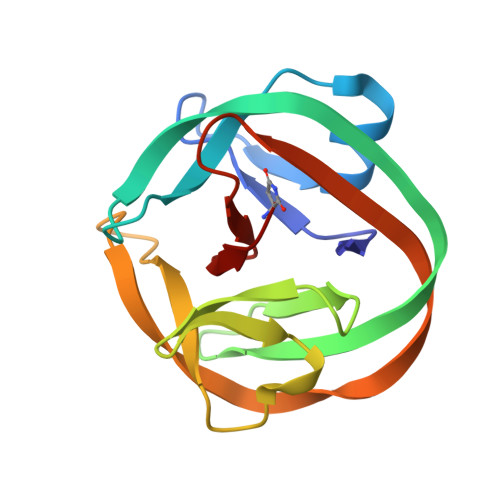Selection and structure of hyperactive inteins: peripheral changes relayed to the catalytic center.
Hiraga, K., Soga, I., Dansereau, J.T., Pereira, B., Derbyshire, V., Du, Z., Wang, C., Van Roey, P., Belfort, G., Belfort, M.(2009) J Mol Biology 393: 1106-1117
- PubMed: 19744499
- DOI: https://doi.org/10.1016/j.jmb.2009.08.074
- Primary Citation of Related Structures:
3IFJ, 3IGD - PubMed Abstract:
Inteins are phylogenetically diverse self-splicing proteins that are of great functional, evolutionary, biotechnological, and medical interest. To address the relationship between intein structure and function, particularly with respect to regulating the splicing reaction, and to groom inteins for application, we developed a phage display system to extend current in vivo selection for enhanced intein function to selection in vitro. We thereby isolated inteins that can function under excursions in temperature, pH, and denaturing environment. Remarkably, most mutations mapped to the surface of the intein, remote from the active site. We chose two mutants with enhanced splicing activity for crystallography, one of which was also subjected to NMR analysis. These studies define a "ripple effect", whereby mutations in peripheral non-catalytic residues can cause subtle allosteric changes in the active-site environment in a way that facilitates intein activity. Altered salt-bridge formation and chemical shift changes of the mutant inteins provide a molecular rationale for their phenotypes. These fundamental insights will advance the utility of inteins in chemical biology, biotechnology, and medicine.
- Wadsworth Center, New York State Department of Health, 150 New Scotland Avenue, Albany, NY 12208, USA.
Organizational Affiliation:


















